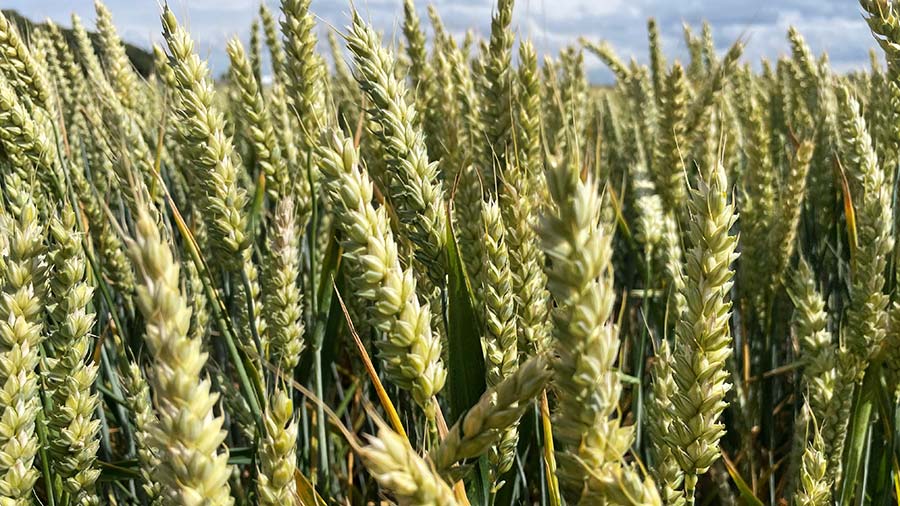Nanofibre technology trialled to help manage wheat diseases
 Extase wheat crop received no fungicdes, just the nanofibre leaf barrier product © MAG/Richard Allison
Extase wheat crop received no fungicdes, just the nanofibre leaf barrier product © MAG/Richard Allison Novel cellulose nanofibre technology is being trialled as a non-chemical approach to foliar disease control in Extase winter wheat.
At Agrovista’s AgX trial site in Northamptonshire, the firm’s soil specialist Chris Martin explains that the cellulose nanofibres act as a barrier on the leaf, protecting them from fungal infection.
Produced from pine trees in Scandinavia, the nanofibres are already used in other industries such as cosmetics. But they could have a valuable role in crop protection.
See also: New soft wheat looks good for biscuits and distilling
When sprayed onto the plant, Chris says it coats the leaf with a mesh which acts as a barrier.
Japanese researchers at the University of Tsukuba found it prevented infection of soyabean plants with Asian rust disease.
In the UK, several years of Agrovista trials suggest that it outperforms multisite fungicides in wheat, and Chris says it will be cheaper.
Visitors at the trial site saw a plot of Extase wheat which received several applications of the product, but no fungicide.
Being an anti-transpirant rather than a pesticide, it could be on the market next year.
It is applied at a rate of 1 litre/ha and repeated applications are needed to coat each leaf as they emerge. No problems have been found with the sprayer, even when applying at 4 litres/ha, he says.
Chris believes it could have a particular role early in season when crops are smaller and fungicide sprays can reach the soil. Using the nanofibres instead of a multisite could reduce any effects on soil fungi.
Also, nanofibres could act as a barrier for pests and Agrovista is looking at whether the technology could help control cabbage stem flea beetle in OSR.
He questions whether nanofibres could help with aphids in cereals and potato crops, where they spread costly diseases such as barley yellow dwarf virus.

